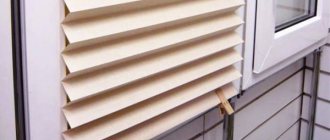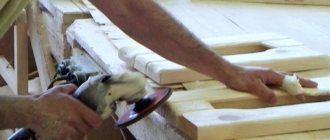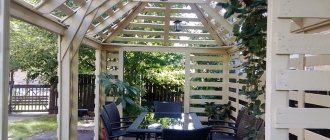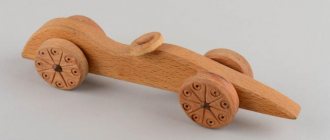A hanger rack, hooks on the wall, hangers in closets are convenient and very optimal attributes in the house. To save space in the hallway, it is advisable to install these interior items instead of shelving. There are many original ideas with which you can create them yourself. Using personal preferences in colors, from any material, on any topic (which is close to you and like, for example, wildlife) and, accordingly, of any shape. The quality and characteristic properties will not be inferior to the version purchased in the store, if you approach manual work wisely. The undoubted advantage will be that a hanger in the hallway with your own hands will be individual, unique, and will cost minimal material costs. It is also important that it will be possible to make options that are most suitable for the design of the entire room, which will be in harmony with it. Creating comfort in your home with your own hands is a truly exciting activity.
Hanger in the hallway.
Purpose of the hanger
The main functions that this multifunctional interior item performs:
- Clothes storage. Thanks to her, it does not wrinkle, looks neat and hangs neatly in its place;
- Save time. You can immediately visually assess where and what is located, which allows you to save time and not waste it searching for this or that wardrobe item;
- Proper organization of space in the hallway or corridor, if they do not have a large area, and compact distribution of things in closets.
Save space and time with a hanger in the hallway.
If there are built-in shelves, you can store items in them; there are also options with shelves for shoes and hats.
In addition, there are models that are used as a decorative element, to decorate and give a certain charm to the interior. They are not used for their intended purpose and are made from fragile, impractical materials.
Benefits of using hooks
The use of hooks in the interior of the hallway is not only a necessity, but a real design technique. Sometimes they are attached to create original decor, which further emphasizes the unique image of the room. And if these are not ordinary objects, but truly original items (for example, made by the owners themselves), then such a rarity becomes the accent point of the entire hallway.
Coat hooks are also used as independent elements, or they can be part of hangers, wardrobes, and hallways. The convenience of using this hardware is as follows:
- Hooks take up minimal space in the room. If it is difficult to find a place for an entire cabinet or shelf, then for such a small item this can be done in any case. They often carry things that should always be at hand: keys, an umbrella, a shoe horn.
- The indispensability of such simple fittings is obvious. Several hooks at the entrance are necessary to make it convenient to hang up immediately after going outside, rather than holding outerwear, a bag, a package, or keys in your hands. Everything will fall into place later.
- Hooks can enliven a space and become an indispensable element of the style of a hallway. This, coupled with the low price and simple fastening methods, makes such fittings convenient and practical for use.
Wooden hangers
Wall design
A wooden structure will fit well into almost any interior. In order to get started, you need to decide what size and height of the hanger you need. Based on this, saw off a suitable fragment of the board. Using a jigsaw, cut out the rounded edges with smooth lines, after which they need to be sanded with sandpaper, first coarse, and finally fine-grained. The board must be treated with a blowtorch or over a gas burner. Attach the resulting blank to the wall; there are 2 methods for this:
We process the board with a burner.
- Attach metal ears to the back side. To fix it with long screws, drill holes in the fastener;
- Fasten the workpiece directly to the wall by drilling through holes.
The final step is to secure the hooks with screws.
If you want to make your wall hanger more spacious and fit more things, then you should choose triple hooks. Antique-made ones will look unusual and beautiful.
Floor design
- Make a cross. Cut the beams (60-70 cm in length) into 2 equal parts, sand them with sandpaper and connect them at an angle of 90 degrees. In sections of the cross, select recesses along the entire perimeter to make the connection more tight.
We make a cross. - Using a fitting, cut out 4 supports for the trunk. Screw it to the legs and trunk with self-tapping screws.
- Attach a small rectangle with hooks placed on it to the top of the trunk.
- Cover the product with varnish and stain. Go over it again with sanding paper and stain it.
Thanks to the stain, the natural pattern present on the wood will acquire clearer contours. Glue rubber to the bottom part, made by yourself, so that it does not slip and scratch the parquet.
DIY floor hanger.
What are hooks made of?
Such a simple, but so necessary in the household item as a hook carries heavy loads. Therefore, certain requirements are often placed on the material and its manufacture.
You can buy plastic, wooden, and metal hooks. Let's take a closer look at each group:
- Plastic. These are the cheapest. They are simply attached; some even have double-sided tape. In the hallway, such accessories are useful for placing small items: keys, combs, shoe blades.
- Tree. Such models have sufficient strength and ease of installation. Their designs are varied due to the softness and pliability of the material. They look great in interiors made in eco-style, country, and Scandinavian. Wooden hooks will get along with the loft.
- Metal. Fittings made of metal can carry a sufficient load. It is durable and also has a long service life. But to attach the hooks, you will have to drill into the walls, since such products are attached to self-tapping screws. There are samples made of steel, bronze, copper, and chromium.
Handmade forged hooks stand out in a special group. Special compounds are applied on top of them to protect the metal from the effects of temperature and moisture, which helps them serve for many years without requiring special repairs or maintenance. Such models look good in a wide variety of interiors, adding lightness and grace to sometimes heavy, bulky furniture. Hooks are decorated with various decorative elements.
Important! Traditionally, hooks are located 150-180 cm from the floor. The height of their mounting depends on the height of family members. You can attach a few more pieces below or a little to the side. Children's clothing and various accessories will hang here.
Previously, hooks were simply attached in one or two rows. Today, designers propose to create an unusual composition that will look original in the interior of the hallway: attach them diagonally, chaotically, in a checkerboard pattern, and so on. Such fittings look stylish on a wooden or metal strip made to match the style of the hallway.
From copper pipe
Copper products are always relevant and have a decent appearance. To do the work yourself you will need: copper pipes: 60 cm - 4 pcs.; 150 cm – 2 pcs.; 90 cm – 1 piece; copper tees – 2 pcs.; epoxy adhesive; copper corners – 2 pcs.
Copper tubes for hangers.
To make the base, you need to connect 2 copper pipes (60 cm) with epoxy glue using a tee. Do the same for 2 other pipes of the same size.
Attach 2 corners to the pipe (90 cm) (later it will serve as a crossbar on which you need to hang clothes). The next step is to insert 2 pipes (150 cm) into the tees and connect the upper part of the pipes with the corners.
After the glue has dried, the product can be used for its intended purpose. It is also possible to add a wooden stand, attach the legs to it and use it to store shoes.
DIY copper hangers.
Advantages of a homemade hanger
Not everyone will immediately want to pick up a jigsaw and go to carpentry. It’s long, it’s tedious, there’s sawdust everywhere... And yet, there are many more advantages to making a floor hanger with your own hands than it seems at first glance.
Firstly, it is significantly cheaper than buying in a store. Yes, when you are your own designer and builder, everything is much cheaper.
Each buyer overpays at least for the brand, production and advertising costs. You can do without all this by purchasing building materials at cost and spending a little of your time instead of money.
Secondly, it is environmentally friendly . Products made from wood create a favorable soft microclimate in the house. They are non-toxic, biodegradable and highly recyclable.
A wooden hanger will last for many years, thereby saving the owner from the need to constantly waste his energy and natural resources on the next replacement.
Thirdly, it is durable . Yesterday it was a wooden chair, today it is a functional hanger, and tomorrow it will become a frame for a cat scratching post. Thanks to the durability of the material, the product will live more than one, or even three, lives before it is sent for recycling.
When designing something as simple as a floor hanger, you can select components with the expectation that they will definitely be useful in the future.
Did you enjoy creating original pieces of furniture with your own hands? Then we recommend that you read the instructions for making furniture from pallets.
From leather belts
A belt can serve not only as a stylish accessory, but also as an interior item. To make a hanger from an old leather belt, you need to cut off its fasteners, giving the ends an oval shape. Then combine the 2 ends of the belt and use an awl to make a hole at a distance of approximately 3-5 cm from the edge. Make a wooden peg with a diameter less than the width of the belt. Fold the belt in half to form a loop and secure it to the wall with a self-tapping screw or a regular nail. Using reliable glue, glue the peg to the base of the loop (where the nail is located).
You can also make 2 such loops at a symmetrical distance from each other and thread the crossbar through the loops. Clothes can be hung either on the loops themselves or on pegs or a crossbar. This hanger looks very stylish and can be improved in many ways by adding bright appliqués, decorations, additional elements, etc.
Hanger made of leather belts.
From branches and cuts
The simplest and most financially profitable model is made from wood branches and trunks. Such a hanger will bring an element of living nature into the design, giving it the atmosphere of a cozy country house; the work will not take much time and effort. Materials can be found in a park or forest. Using pruning shears, it is enough to trim off the excess branches; the remaining ones will act as hooks. A solid piece of wood is suitable as a support for a floor hanger. The bark can be peeled, painted any color, or left unchanged. A trunk with branches can be cut into sections. Next, you should hang them on the wall on a board or frame. The result is a multifunctional, convenient interior element. The trunk can also be hung near a window or under the ceiling as a support and a kind of crossbar for hangers.
Hanger made of tree branches.
From pallets
The main item for this idea is a wooden pallet. Before you start manufacturing, you need to remove all unnecessary elements (bottom, side wall) using a saw. You will need a part consisting of 4 long planks, fastened on the sides. The pallet must be thoroughly cleaned of odors, and all irregularities must be removed with sandpaper. After the surface is smooth, the product must be painted with wood paint and varnished on top. Use a marker to mark the places where the hooks will be attached. The pallet hanger is quite massive, and you need to choose a reliable fastening. Attach the hooks to the pallet, then use self-tapping screws and a drill to hang the pallet on the wall. Additionally, you can nail the shelves and holders.
DIY pallet hanger.
Installation of hooks
Attaching hooks to a wall or hanger is carried out in one of 4 currently known ways:
- using self-tapping screws or self-tapping screws;
- by gluing to the base;
- suction cups;
- magnets.
Let's look at them in more detail:
- The first type is the most popular and reliable. With this fastening, the wall hook will not break even under heavy load, but will remain in its place. For heavy outerwear, this installation method is best suited.
- If the load on the hook is not meant to be too strong, for example in a bathroom or nursery, you can use adhesive tape or suction cups. The main advantage of this type of fastening is that the hook can always be removed if desired, and no marks will remain on the wall. But for the suction cup it is important that the main surface is perfectly flat and smooth.
- The magnetic method of mounting hooks is used extremely rarely. It requires installing a metal surface where you plan to make a hanger.
Installing a hook on a hanger is a process that anyone can do
Fastening technology
Regarding the first type of fastening with self-tapping screws or self-tapping screws, we can say that coat hooks are installed according to the following algorithm:
- Marking the desired placement locations on a hanger or wall.
- Drilling holes in the wall if the hooks are mounted on it. Installation of dowels in prepared holes. If the hooks are installed on a wooden hanger, it is not necessary to drill holes; it is enough to use self-tapping screws.
- Applying hooks so that the holes on the base surface coincide with those on the product.
- Fixing the hook with screws or self-tapping screws.
Installing a hook model with a built-in threaded part
From longitudinal and transverse boards
This roomy model will fit shoes, hats, and jackets. To begin, fix 2 longitudinal planks on the wall: bottom and top. The length is determined depending on how wide the shelves you plan to make. Using self-tapping screws, attach transverse bars to the longitudinal boards. The interval should be sufficient to store clothes, the quantity can be any - choose at your discretion. In order to make even fastening of the elements, use a level. To construct the support, use bars (in the future this will be a shelf for shoes). Use metal corners to secure the connections. Also, with their help, secure a shelf on top (for hats, hats, gloves) perpendicular to the longitudinal boards. The final stage will be attaching the hooks and decorating.
Hanger made of longitudinal and transverse boards.
The process of making a hanger
Cut out a template from a sheet of plywood and transfer it to the timber with a marker. Drill 2 holes in the inner part and use a jigsaw to cut out the outlined template. Mark the hole for the hook and then drill it (diameter 5 mm). Cut a notch in the inner part of the drilled hole (using a file with a large notch), place the nut in it. The notch is needed in the future to prevent the formation of snags during operation. Saw off 20 centimeters of wire with a narrow handsaw, round off one end with a file, chamfer the other and cut the thread with a metal-cutting die (length about 5 mm). Drill a hole for the hook, which needs to be bent, then insert and secure firmly with a nut.
Decoration
Unusual design solutions can transform any, even unsightly, hallway. To maintain a classic style, the hanger can be covered with leather (leather substitute) or preserve the natural beauty of wood, if that is what was used. Paint the hooks with bronze or gold paint. Upholster the hangers with velvet and satin fabric. For country music, use additional accessories in the form of horns; they can be cut from wood. For a retro style, the color can be artificially aged; the decoupage technique is used for Provence. Glue or draw flowers, images of birds, landscapes as prints. In a modern interior, experiments, unusual shapes, original accessories, silhouettes, and complex intricate patterns are acceptable. You can decorate and add originality with rhinestones, sequins, handmade decor, drawings, bows. Apply images of your favorite cartoon characters, TV series, books.
Caring for a wooden floor hanger
Wood is a material that requires regular maintenance. The hanger will need to be wiped daily, first with a damp and then with a dry cloth. The care fabric should be soft. You can use special cleaning products, but you need to make sure that they do not contain aggressive chemicals, such as ammonia. It would also be appropriate to treat the wood surface:
- wax;
- vinegar.
It is important to maintain the correct temperature. If a hanger is exposed to a heater for a long time, it will soon become deformed. Also follows:
- eliminate the possibility of exposure to direct sunlight;
- prevent various mechanical damage.
It is necessary to regularly inspect the structure if connections need to be tightened. To remove contaminants on the surface of wood, you can use:
- walnut poison;
- paraffin;
- hot knife;
- petrol;
- raw potatoes.
The choice of product depends on the type of contamination
Prices for wood preservatives
Impregnation for wood
For preventive purposes, it is important to carry out monthly maintenance. To do this, you can use the following recommendations.
- A vacuum cleaner with a soft attachment will help you dry clean shelves.
- Using a soft cloth, wipe the surface in the direction of the wood grain. This way dust will not accumulate in the pores.
- If any defects, such as scratches, are found on the hanger, they must be repaired with a special mastic. It must completely match the color of the wood. The procedure should be carried out only on a dry, clean surface.
Preventative care will help maintain an attractive appearance and extend the life of the hanger.
Adviсe
- To avoid cracks in the wood, it is recommended to drill holes with a drill before screwing in the screws.
- The diameter of the screw must be larger than that of the drill. Fill the holes with glue in advance, and then screw in the self-tapping screw - this way the product will be able to carry a lot of clothing weight and will be more wear-resistant and strong.
- For metal hangers, use paints and coatings that resist corrosion.
- At the planning stage, it is definitely important to take into account the dimensions of the wall, think about exactly how you will secure the workpieces, taking into account the material from which the wall is made (concrete, wood, plastic).
- All wood blanks must be processed with a grinding machine or sandpaper, at least 2 times: first with a coarse grain, and then with a fine grain.
DIY wooden wall hanger
An integral part of any corridor, as well as an item that is simply necessary in every apartment.
You can build a wall hanger yourself using all the necessary tools. The material options can be different, the best of course is wood. For the “cheaper” option, you can use chipboard.
The tools that we will definitely need are:
- Screwdriver or screwdriver.
- Drill.
- The set was drilled.
- Roulette with a pencil.
- Hooks.
It is very simple to do - just measure the required distance and drill hooks to the board, and then hang the finished hanger on the wall. But there are more interesting options for such crafts.
Photo gallery: DIY hallway hanger
White hanger in the hallway.
Expert Yulia Kovtunova (Author, content manager) Work experience: 3 years, since 2020.











